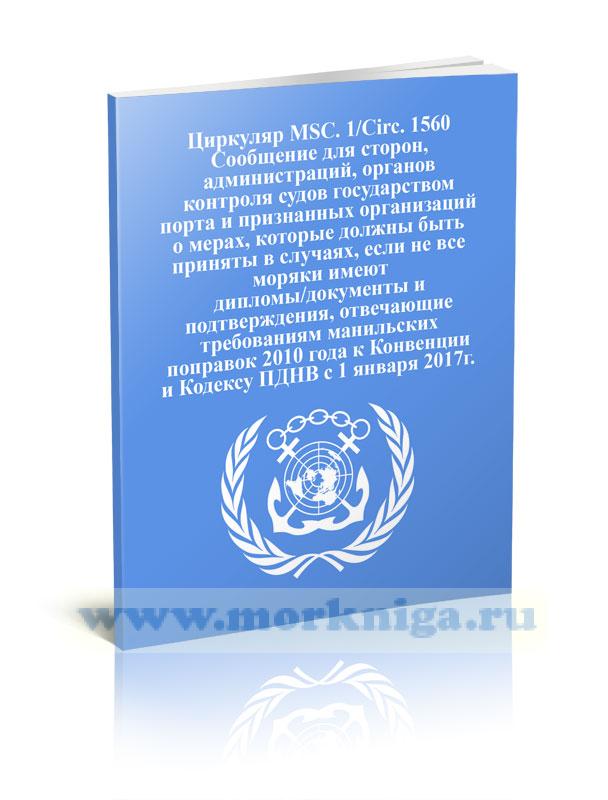IMO/ILO/UNECE Code of Practice for Packing of Cargo Transport Units (CTU Code)
-
 –¶–Є—А–Ї—Г–ї—П—А–љ–Њ–µ –њ–Є—Б—М–Љ–Њ MSC.Circ.1105 –†—Г–Ї–Њ–≤–Њ–і—Б—В–≤–Њ –њ–Њ –Њ—В–≤–µ—В—Б—В–≤–µ–љ–љ–Њ—Б—В–Є –≤ —Б–≤—П–Ј–Є —Б –Є—Б–њ–Њ–ї—М–Ј–Њ–≤–∞–љ–Є–µ–Љ –∞–њ—В–µ—З–Ї–Є –і–ї—П —З—А–µ–Ј–≤—Л—З–∞–є–љ—Л—Е –Љ–µ–і–Є—Ж–Є–љ—Б–Ї–Є—Е –Њ–±—Б—В–Њ—П—В–µ–ї—М—Б—В–
–¶–Є—А–Ї—Г–ї—П—А–љ–Њ–µ –њ–Є—Б—М–Љ–Њ MSC.Circ.1105 –†—Г–Ї–Њ–≤–Њ–і—Б—В–≤–Њ –њ–Њ –Њ—В–≤–µ—В—Б—В–≤–µ–љ–љ–Њ—Б—В–Є –≤ —Б–≤—П–Ј–Є —Б –Є—Б–њ–Њ–ї—М–Ј–Њ–≤–∞–љ–Є–µ–Љ –∞–њ—В–µ—З–Ї–Є –і–ї—П —З—А–µ–Ј–≤—Л—З–∞–є–љ—Л—Е –Љ–µ–і–Є—Ж–Є–љ—Б–Ї–Є—Е –Њ–±—Б—В–Њ—П—В–µ–ї—М—Б—В–
-
 –¶–Є—А–Ї—Г–ї—П—А MSC.l/Circ.1205/Rev.1 –Я–µ—А–µ—Б–Љ–Њ—В—А–µ–љ–љ–Њ–µ —А—Г–Ї–Њ–≤–Њ–і—Б—В–≤–Њ –њ–Њ —А–∞–Ј—А–∞–±–Њ—В–Ї–µ –љ–∞—Б—В–∞–≤–ї–µ–љ–Є–є –њ–Њ —Н–Ї—Б–њ–ї—Г–∞—В–∞—Ж–Є–Є –Є —В–µ—Е–љ–Є—З–µ—Б–Ї–Њ–Љ—Г –Њ–±—Б–ї—Г–ґ–Є–≤–∞–љ–Є—О —Б–Є—Б—В–µ–Љ —Б–њ–∞—Б–∞—В–µ
–¶–Є—А–Ї—Г–ї—П—А MSC.l/Circ.1205/Rev.1 –Я–µ—А–µ—Б–Љ–Њ—В—А–µ–љ–љ–Њ–µ —А—Г–Ї–Њ–≤–Њ–і—Б—В–≤–Њ –њ–Њ —А–∞–Ј—А–∞–±–Њ—В–Ї–µ –љ–∞—Б—В–∞–≤–ї–µ–љ–Є–є –њ–Њ —Н–Ї—Б–њ–ї—Г–∞—В–∞—Ж–Є–Є –Є —В–µ—Е–љ–Є—З–µ—Б–Ї–Њ–Љ—Г –Њ–±—Б–ї—Г–ґ–Є–≤–∞–љ–Є—О —Б–Є—Б—В–µ–Љ —Б–њ–∞—Б–∞—В–µ
-
 –¶–Є—А–Ї—Г–ї—П—А MSC. 1/Circ. 1560 –°–Њ–Њ–±—Й–µ–љ–Є–µ –і–ї—П —Б—В–Њ—А–Њ–љ, –∞–і–Љ–Є–љ–Є—Б—В—А–∞—Ж–Є–є, –Њ—А–≥–∞–љ–Њ–≤ –Ї–Њ–љ—В—А–Њ–ї—П —Б—Г–і–Њ–≤ –≥–Њ—Б—Г–і–∞—А—Б—В–≤–Њ–Љ –њ–Њ—А—В–∞ –Є –њ—А–Є–Ј–љ–∞–љ–љ—Л—Е –Њ—А–≥–∞–љ–Є–Ј–∞—Ж–Є–є –Њ –Љ–µ—А–∞—Е, –Ї–Њ—В
–¶–Є—А–Ї—Г–ї—П—А MSC. 1/Circ. 1560 –°–Њ–Њ–±—Й–µ–љ–Є–µ –і–ї—П —Б—В–Њ—А–Њ–љ, –∞–і–Љ–Є–љ–Є—Б—В—А–∞—Ж–Є–є, –Њ—А–≥–∞–љ–Њ–≤ –Ї–Њ–љ—В—А–Њ–ї—П —Б—Г–і–Њ–≤ –≥–Њ—Б—Г–і–∞—А—Б—В–≤–Њ–Љ –њ–Њ—А—В–∞ –Є –њ—А–Є–Ј–љ–∞–љ–љ—Л—Е –Њ—А–≥–∞–љ–Є–Ј–∞—Ж–Є–є –Њ –Љ–µ—А–∞—Е, –Ї–Њ—В
IMO/ILO/UNECE Code of Practice for Packing of Cargo Transport Units (CTU Code)
The use of freight containers, swap bodies, vehicles or other cargo transport units substantially reduces the physical hazards to which cargoes are exposed. However, improper or careless packing of cargoes into/onto such units, or lack of proper blocking, bracing and lashing, may be the cause of personnel injury when they are handled or transported. In addition, serious and costly damage may occur to the cargo or to the equipment.
The types of cargoes carried in freight containers has expanded over many years and innovations such as use of flexitanks and developments allow heavy, bulky items which were traditionally loaded directly into the shipsвАЩ hold (e.g. stone, steel, wastes and project cargoes), to be carried in cargo transport units
Table of contents
Chapter 1. Introduction
Chapter 2. Definitions
Chapter 3. Key requirements
Chapter 4. Chains of responsibility and information
Chapter 5. General transport conditions
Chapter 6. CTU properties
Chapter 7. CTU suitabilit—Г
Chapter 8. Arrival, checking and positioning of CTUs
Chapter 9. Packing cargo into CTUs
Chapter 10. Additional advice on the packing of dangerous goods
Chapter 11. On completion of packing
Chapter 12. Advice on receipt and unpacking of CTUs
Chapter 13. Training in packing of CTUs
Annexes
Annex 1 Information flow
Annex 2 Safe handling of CTUs
Annex 3 Prevention of condensation damages
Annex 4 Approval plates
Annex 5 Receiving CTUs
Annex 6 Minimizing the risk of recontamination
Annex 7 Packing and securing cargo into CTUs
Appendix 1 Packaging marks
Appendix 2 Friction factors
Appendix 3 Practical methods for the determination of the friction factor ?
Appendix 4 Specific packing and securing calculations
Appendix 5 Practical inclination test for determination of the efficiency of cargo securing arrangements
Annex 8 Access to tank and bulk tops, working at height
Annex 9 Fumigation
Annex 10 Topics for consideration in a training programme

